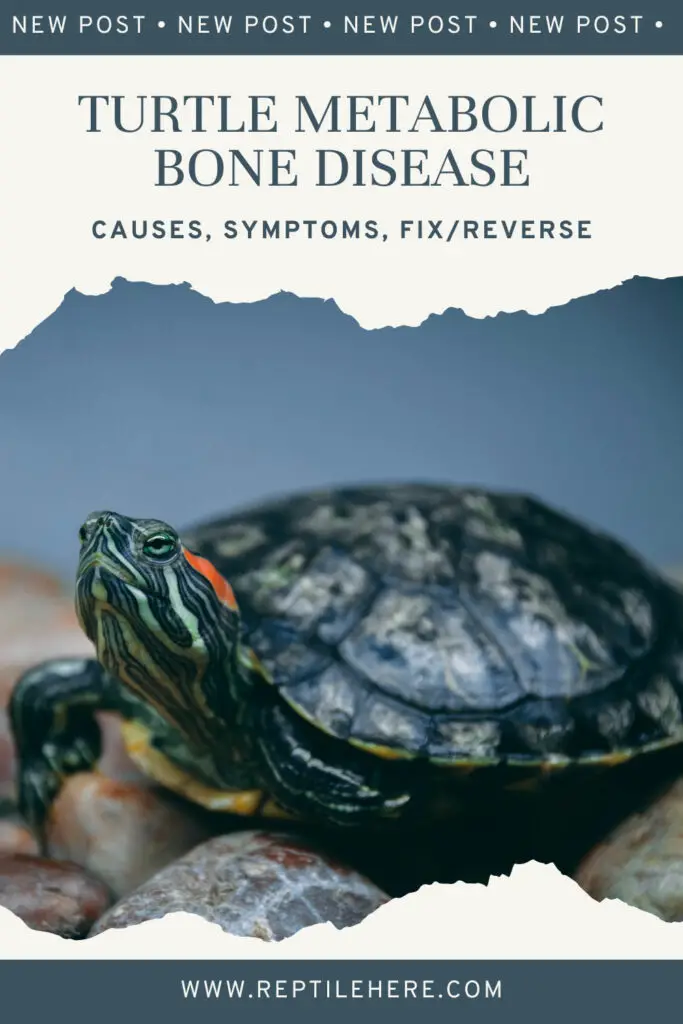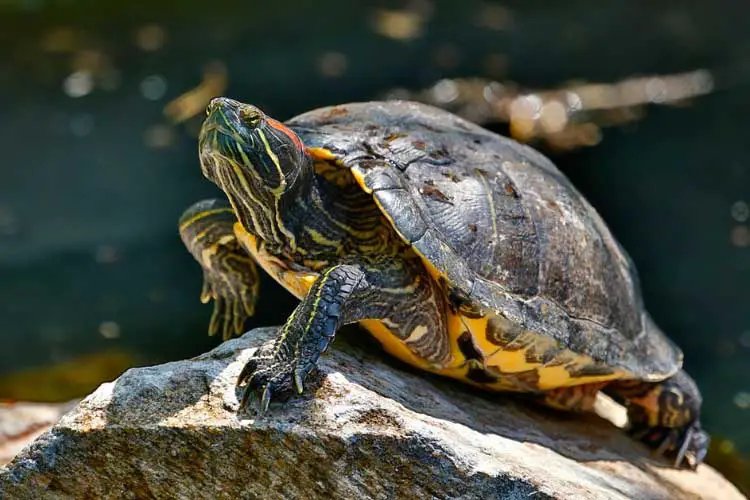Turtle Metabolic Bone Disease – Causes, Symptoms, Fix/Reverse
Metabolic bone disease (MBD) is one of the most common reptile diseases that affect pet turtles. This disorder can make life a living hell for your pet—it messes with your turtle’s mobility, causes severe pain, makes eating difficult, and can even cause death!
MBD is brought about by your turtle bones lacking calcium due to malnutrition or if your pet can’t use the calcium in its diet. This disease affects your turtle’s bones and shell structure, and may also affect the internal organs. The disease affects shell growth and development and can affect a turtle at any age.
The following guide will teach you everything you need to know about this dreaded turtle disease. We have discussed everything from the causes, early symptoms to look out for, how to fix/reverse this condition, and so much more.
What causes MBD in turtles?
Contents
Metabolic bone disease can be caused by different factors or a combination of given factors. But it all boils down to lack of a balanced diet, improper nutrition, and poor animal husbandry.
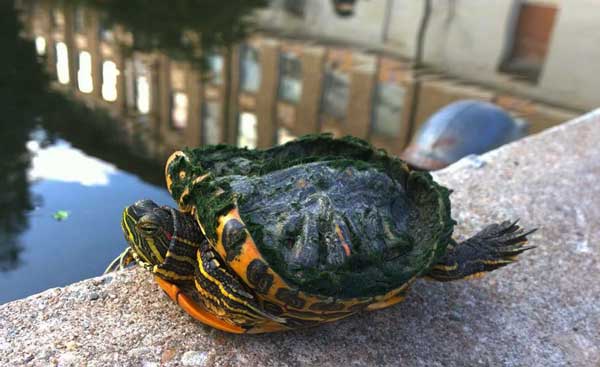
Let’s take a closer look at the main causes of MDB in turtles below:
Calcium deficiency
Too little calcium in your turtle’s body is one of the main causes of metabolic bone disease.
As you may already know, calcium is an essential nutrient for promoting the growth and development of bones as well as supporting proper nerve functioning in turtles.
That said, reptiles usually require a specific calcium-phosphorus-vitamin D3 ratio for their bodies to stay healthy. Too little calcium easily disrupts this balance.
And once the animal’s normal calcium reserves get depleted, its body starts using other sources including its bone material to help get more calcium—this leads to MDB!
Insufficient UVA and UVB lighting
Another major cause of metabolic bone disease is inadequate exposure of your turtle to UVA and UVB lighting.
Whether in the wild or in captivity, a turtle requires access to a UVB light lamp or natural unfiltered sunlight to produce vitamin D3.
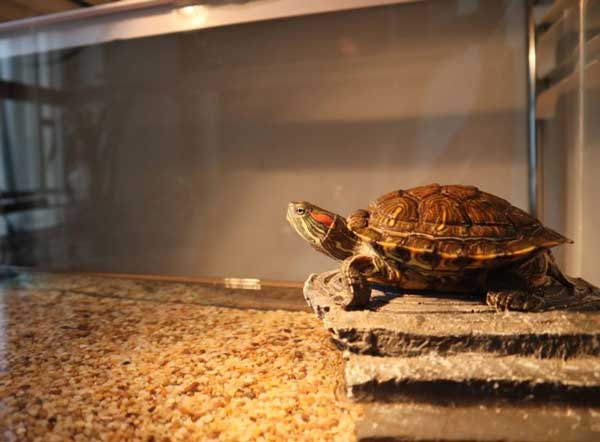
Again, if they lack this vitamin, the calcium-phosphorus-vitamin D3 balance will get disrupted.
And your turtle can’t properly absorb/utilize calcium in its body. Lack of, or insufficient exposure to a UV light source, will therefore result in MDB.
Inappropriate temperature
Your turtle living in too low or too high temperature conditions can also increase the risk of MDB disorder.
Unideal temperatures usually contribute to the impairment or slowing of the turtle’s digestion and metabolic functions.
It also affects vitamin D3 and calcium intake, increasing the MDB risk.
Other diseases & disorders
If your turtle is suffering from other diseases and disorders, it may also develop the metabolic bone disease as a secondary condition.
This stems from the fact that these other diseases can adversely affect the reptile’s organ system, including the kidneys, livers, small intestines, or thyroid & parathyroid glands.
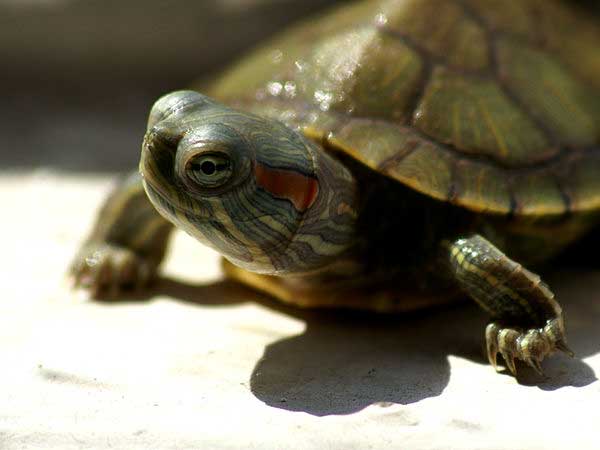
These organs are involved in turtle metabolisms and proper calcium absorption and vitamin D3 intake. So, if their functioning is affected, MDB is likely to catch up with the turtle.
Gravid turtles and MDB
The reproductive status of your turtle is another reason your turtle may get MDB disease.
For instance, during the breeding period, the eggs developing in the female ovaries necessitate an additional calcium intake. This makes the female turtle more susceptible to MDB.
If you have a pregnant turtle, we advise you to provide it with additional supplementation and closely monitor it for signs and symptoms of metabolic bone disease.
What are the early signs of MBD?
The signs of metabolic bone disease tend to differ from turtle to turtle depending on how long the condition has developed and how severe it is.
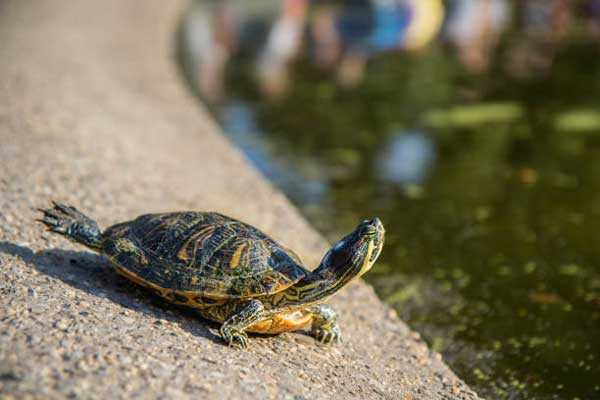
Below are the early signs of MDB to look out for in your turtle:
- Softened or deformed shell
- Swollen legs
- Weak limbs (which affects turtle mobility)
- Splayed out legs
- Paralysis/lethargy
- Deformed jaws
- Anorexia
- Shell points up at the edges
- Beak deformity
- Bone fractures
- Defecating issues
As you can see from the above list, MDB can affect many parts of a turtle including its head, limbs, jaws, body, toes spinal column, and tail.
As bones become too brittle due to the turtle system attempting to get calcium from them, the turtle body will try strengthening and repairing them by producing and laying down new fibrous connective tissues to the strained points.
This is the reason why the limbs and other affected areas become swollen. And the bones and ligaments break owing to extra pressure as their muscles pull on them
NOTE that this disorder doesn’t occur suddenly and it’s easy for beginner turtle owners to miss the early symptoms and stages
How do you treat MBD in turtles?
The best way to treat MDB in your pet turtle will depend on how severe the case is.
If your turtle only has a mild MDB case, then you just need to start giving him a balanced diet and ensuring he lives in an ideal environment with appropriate conditions.
However, if the case is so severe, you’ll need to give your turtle intensive supplementation of calcium and vitamins.
You should also increase high-intensity UVB rays. This should be done under a herps vet’s care.
If you’re treating your turtle at home and his condition doesn’t seem to improve in a couple of weeks, then you may want to consult your vet.
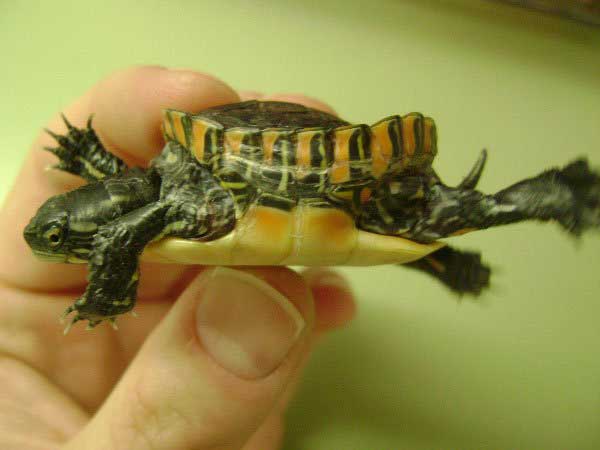
Vets usually diagnose the animal to find the extent of this condition and recommend the best treatment and cause of action.
How do I add calcium to my turtle’s diet?
Since MBD’s primary risk factor is a turtle calcium deficiency, you may be asking yourself how you can add calcium to your pet’s diet to maintain the proper calcium-to-phosphorous ratio we discussed earlier.
You can achieve this by feeding your turtle calcium-rich foods. Foods rich in calcium for your turtle include brussels sprouts, cabbage, alfalfa, bok choy, spinach, collard greens, okra, berries, cantaloupe, kale, berries, mustard greens, etc.
If your pet turtle is predominantly carnivorous, e.g. a softshell, mud, or musk turtle, then you may consider feeding them whole fish such as the feeder fish and tilapia, shrimps, crustaceans, pinkie mice, or even raw lean beef.
Because turtles are generally omnivorous, you can offer your pet a mixture of the animal proteins and plants above for a proper diet. Researching your turtle species’ dietary needs will also help ensure you give your pet the right foods.
Above all, you may also consider giving your pet turtle calcium and vitamin D supplements to help boost its calcium and vitamin D3 levels. However, don’t overuse these supplementations as they can result in medical complications in your turtle.
Can turtles recover from metabolic bone disease?
Yes, your turtle can recover from MDB if it’s detected early enough. The condition can be easily corrected and reversed in the early stages and adjusting your husbandry to your pet.
This simply means you start providing it with adequate UVA and UVB levels, proper supplements, proper temperatures, and other nutrients).
Many of the symptoms of MDB will go away once you take the proper cause of action.
You may also want to provide enough space for your turtle’s exercise and physical therapy to help them redevelop their weakened muscles and bones.
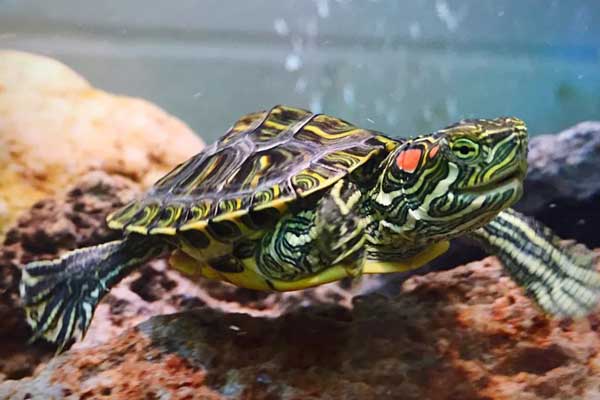
However, severe and more advanced/progressed cases of MBD are less likely irreversible. Severe damage caused by this disorder will become permanent.
The good thing, however, is you can slow or stop further advancement of the disorder by taking the appropriate corrective action.
Your vet may administer injectable or oral supplements calcium supplements to your turtle. They can also set the broken bones to enable them to heal and mend with time.
How do you prevent metabolic bone disease?
You can keep metabolic bone disease off your turtle by providing it with a balanced diet as well as appropriate UVB lighting and temperature in its tank.
Feed your turtle a balanced diet that contains vegetables and proteins. Consider vegetables such as kale, bok choy, collard greens, spinach, okra, cantaloupe, squash, berries, alfalfa sprouts, etc.
Make sure you provide your turtle with a suitable environment with optimal conditions to minimize the chances of MDB occurrence.
And be sure to monitor any changes or abnormal growths on your pet’s body and take action if something seems off.
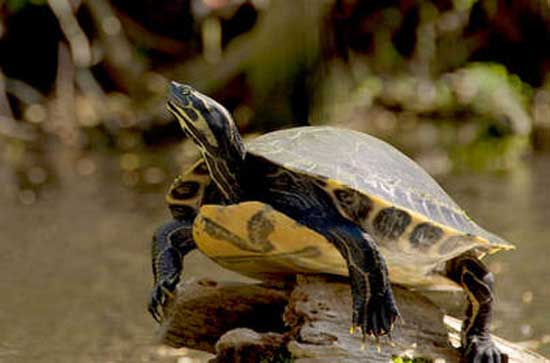
Provide your turtle with a decent UV light lamp to enable them to produce vitamin D3; this vitamin enables the animal to properly absorb calcium in its body.
While humidity isn’t one of the causes of MDB disease, it can make the situation worse. Therefore, make sure the humidity stays at around 80% in your pet turtle’s environment.
Above all, make sure the tank water temperature is optimal; it should be around between 72-77° F for most pet species.
Is MBD fatal?
Metabolic bone disease can turn fatal if no intervention or action is taken. Ignoring this condition knowingly or unknowingly simply gives it more room to advance and become worse over time.
Not taking action will cause the turtle’s organs, organ systems, and bones to be affected even more and may at some point cease functioning!
Your pet’s bones will become even softer and more fragile and may start breaking easily. The muscles will also become affected and may cease contracting easily.
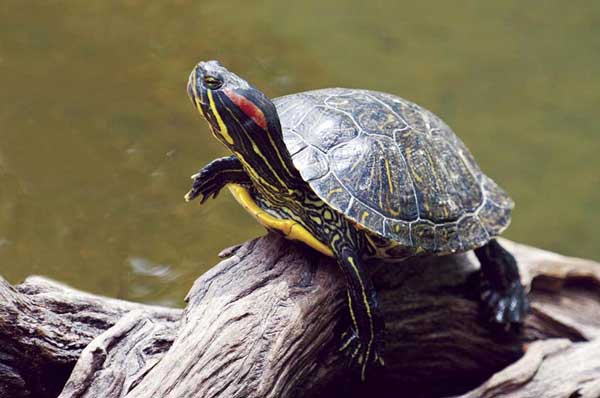
As this condition progresses, your turtle’s body will start metabolizing tissue in an attempt to repair the damaged bone structure.
Turtles with MDB may end up becoming paralyzed. They become excessively deformed and weak over time. In the worst-case scenario, MDB can kill your turtle!
Does MBD hurt?
Judging from how MDB manifests itself in your pet turtle, there’s no doubt that it’s a painful condition for the animal.
Case in point, the disease causes limbs to become swollen and painful, meaning moving around will be more hurtful for your turtle than ever before.
The jawbones turning soft and spongy will also make eating difficult and painful exercise and ultimately lead to loss of appetite. That’s more pain and suffering!
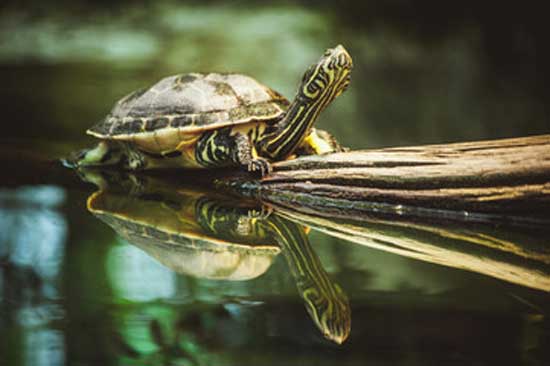
Your turtle’s living bones getting fractured due to MDB also becomes a source of pain for your little friend.
As the disease advances and causes more damage to your turtle’s body, the more painful it gets.
If the disease is not treated and become so severe, your turtle will ultimately die due to the unbearable pain!
FAQs:
MB can manifest in various ways and at various locations in turtles. The most common signs that a turtle has this disorder include bowed legs, soft and flexible jaws, the presence of hard lumps on the jaw, legs, and spinal column, and difficulties raising the body from the ground.
Yes, MBD has been shown to produce a variety of neurological symptoms, including seizures, if the nerves are affected. Other neurological symptoms include gait difficulty, altered mental state, and cognitive dysfunction.
MDB can be revered successfully if detected in the early stages. Otherwise, if allowed to advance and progress to a point of being so severe, the damage becomes permanent and there’s nothing much can be done to reverse the condition. The only thing they can be done at this time is to try to stop or slow the condition from getting even worse.
Final Verdict
MDB is one of the diseases you don’t want near your pet turtle. It brings deformities to your pet’s body and leads to lifetime crippling injuries. In severe cases, it can even lead to death. The disease is usually caused by poor husbandry and can be prevented by ensuring you provide your turtle with a proper diet and an appropriate environment with optimal conditions.
If you detect any symptoms of MDB in your turtle, it’s best to take action immediately to help save your turtle before the condition becomes severe. The MDB is easily corrected and reversible in the early stages. But it can be difficult to reverse and its damage will become permanent if ignored and allowed to advance and progress to more severe stages.
